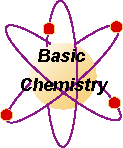Le Chatelier's Principle
Purpose:
In aqueous solution using chemicals and heat you can change copper sulfate (CuSO4) to potassium copper bromide (K2CuBr4).
Materials:
450 ml of 0.17 M CuSO4.5 H2O.
- 50 ml of a saturated solution of Na2SO4.10 H2O
- 100 ml saturated solution of KBr.
- three 400 ml beakers.
- three 100 ml beakers
Procedure:
Put 150 ml of copper sulfate solution into each 400 ml beaker.
- Put two 50 ml potassium bromide solutions into two 100 ml beakers.
- Put one 50 ml sodium sulfate solution into one 100 ml beaker.
- Keep one copper sulfate solution for reference (something to compare against).
- With stirring, add 50 ml of potassium bromide (KBr) solution to each of the other two copper sulfate (CuSO4) solutions. The color of the solution should change to green showing the presence of K2CuBr4. To the reference beaker add 50 ml of water to take care of the dilution effect.
- With stirring, add 50 ml sodium sulfate (Na2SO4) solution to one of the green solutions prepared in the previous step. The color of the solution changes back to blue indicating an equilibrium shift. Again add 50 ml of water to the other beakers to take care of the dilution effect.
- Heat the solution prepared in the last step. When the solution becomes hot the color will change to green again.
- Finally place the solution prepared in the last step into an ice bath to cool. The solution will shift back to blue.
Discussion:
This experiment has shown the effect of chemicals and heat on an equilibrium reaction. Reference solutions were used to show that the changes were not due to the addition of liquid water, but due to the chemicals. Using the information above you should be able to write the equilibrium reaction





